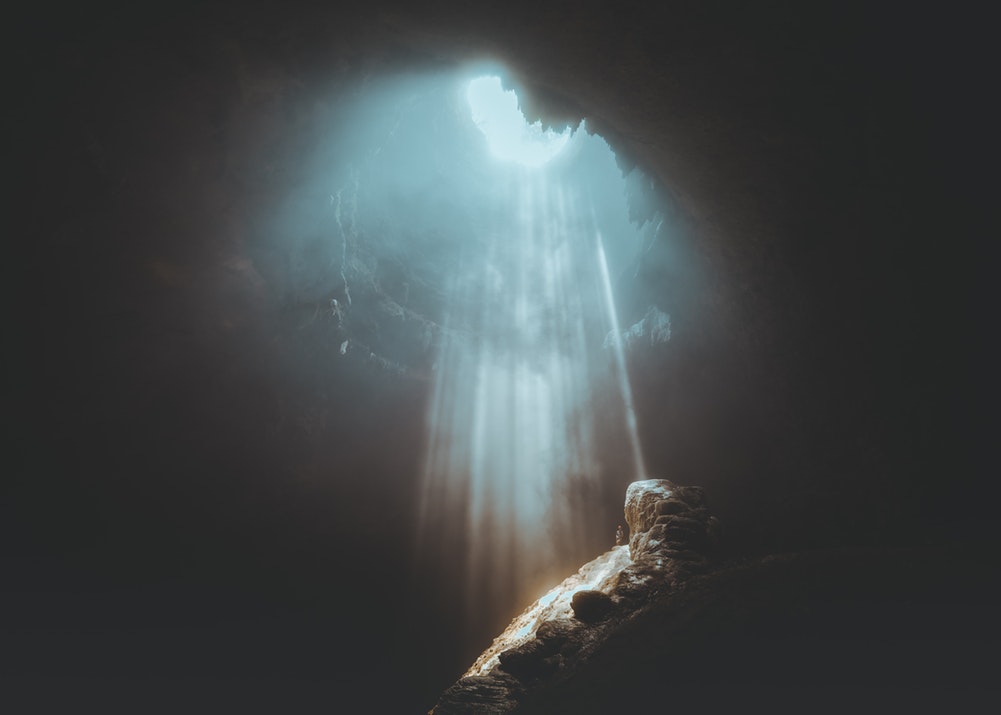Three robot advances that’ll be needed for DARPA’s new underground challenge

This week, the US Defense Advanced Research Projects Agency announced a challenge to push the limits of robotic design and control.
DARPA’s Subterranean Challenge will require teams to have robots maneuver objects through three different environments: a series of caves, a bunker-like “urban environment,” and a labyrinth of confined tunnels. While the robots will be remote-controlled, they’ll need some serious autonomous skills. They will need to rapidly map and explore unfamiliar environments even when communications are spotty and conditions are challenging for sensors.
The teams will be allowed to use as many different types of robot as they like, but this will mean dealing with greater complexity in communications and coordination. “You may be a great swimmer but not a great runner or cyclist, but when you put them all together, it’s how you can handle all three of those events that allow you to cross the finish line,” Timothy Chung, program manager at DARPA, said at the event on Thursday.
Previous DARPA projects have had mixed success in spurring advances in important areas of technology. The Grand Challenge and the Urban Challenge both helped push self-driving vehicles forward. More recently, DARPA’s Robotics Challenge showed just how difficult it is for robots to operate in truly unstructured situations.
Underground environments can be very dangerous for miners and explorers, as was highlighted by the recent rescue of a Thai soccer team trapped far inside a cave complex for several days. The hope is that the new challenge will inspire valuable, life-saving technologies and ideas. (Just don’t mention it to Elon Musk.)
So what kinds of advances will a robot need to progress in the Subterranean Challenge?
New forms: A less human form might be useful for crawling through tunnels and caves. Boston Dynamics has, of course, demonstrated all sorts of four-legged robots capable of covering difficult terrain. It has also shown how an insect-like system can climb trees or walls or simply leap over objects. But researchers have been developing non-humanoid robots for a long time. Don’t be surprised, for instance, to see some snake-like systems wriggling their way through parts of the course.
A smarter remote: In the environments presented to the robots, it will be necessary to balance autonomy with tele-operation. Hermes, a system built in Sangbae Kim’s lab at MIT, used a full-body tele-op suit to improve the balance and physical mobility of a humanoid robot. Meanwhile, a robot called OceanOne, developed at Stanford University, used advanced semi-autonomous tele-operation in a challenging underwater environment.
Sensor fusion: Most self-driving cars use a combination of sensors to make identifying obstacles more reliable. The Subterranean Challenge will require reliable mapping even when most (or all) of the sensors are impaired by varied lighting and dirt. High-speed mapping software will also be required.
The teams chosen for the challenge come from Carnegie Mellon University, the Australian government research lab CSIRO, iRobot, Endeavor Robotics, Caltech’s Jet Propulsion Laboratory, the University of Colorado, the University of Nevada, and the University of Pennsylvania.
Two more teams, from Michigan Technological University and Scientific Systems, will take part in a separate virtual competition held in an environment with realistic, if simplified, physics.
Deep Dive
Artificial intelligence
Large language models can do jaw-dropping things. But nobody knows exactly why.
And that's a problem. Figuring it out is one of the biggest scientific puzzles of our time and a crucial step towards controlling more powerful future models.
Google DeepMind’s new generative model makes Super Mario–like games from scratch
Genie learns how to control games by watching hours and hours of video. It could help train next-gen robots too.
What’s next for generative video
OpenAI's Sora has raised the bar for AI moviemaking. Here are four things to bear in mind as we wrap our heads around what's coming.
Stay connected
Get the latest updates from
MIT Technology Review
Discover special offers, top stories, upcoming events, and more.